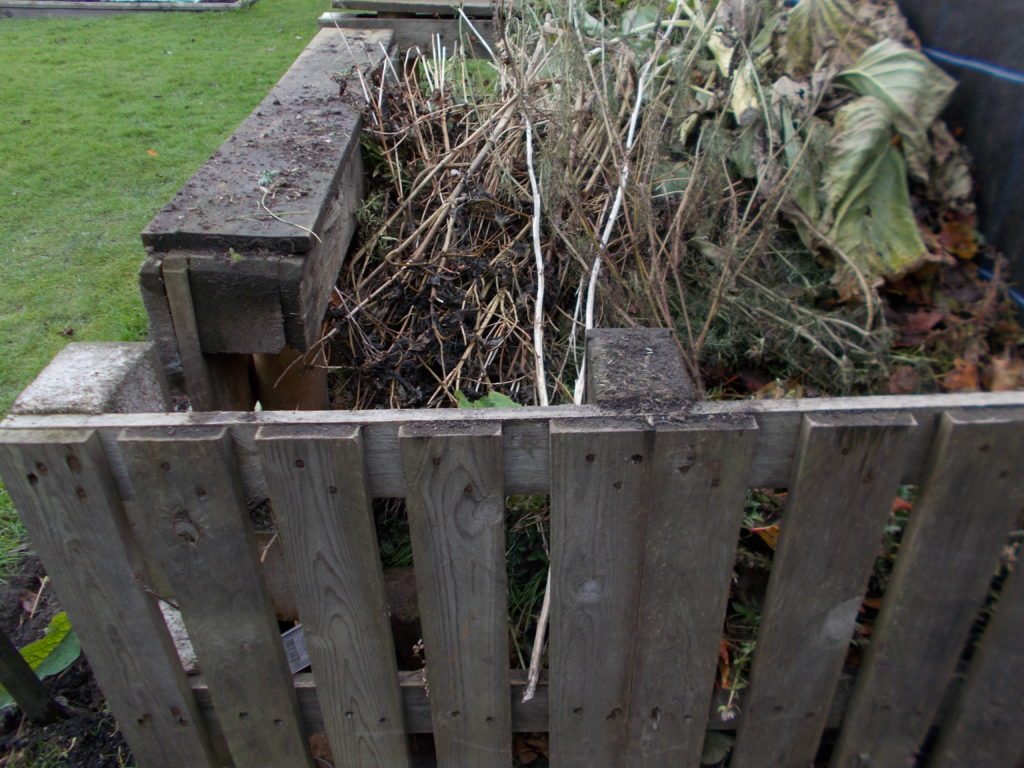Much of the work to be done in the garden at this time of year produces quantities of pruning’s and other green resource material. Note the use of the word resource. All this garden waste can be turned into soil improving compost. By definition waste has a negative connotation. Turn this thought around and the material becomes a resource. Increasingly today’s gardens become tidy, so it is perceived compost must be contained rather than left in an untidy pile. Not that there is anything wrong with a pile of composting vegetation sitting in an out of the way corner of the garden. Just make sure it is accessible for armfuls of pruning’s or wheelbarrow loads of herbaceous stems. One way of constructing a structure is to use discarded wooden pallets and held in place with corner posts. Choose a position free of perennial weed; there is nothing better a Bindweed shoot likes than a hot tub of rotting vegetation. The last thing needed is a mature heap of friable compost infested with the long fleshy white roots of Convolvulus or similar pernicious weed. When adding to the compost heap; mix woody with soft green material. Should too much soft green material sit together it can compact down into an airless mass. Anerobic conditions result in slower decomposition and material of a poorer quality. Woody twigs and shoots from pruning will keep the heap open and the more efficient aerobic composting process will occur. Turn regularly and wait for the health of your soil to improve as you regularly dig out the heap and add this humus forming material to the garden. Give nothing away, all the vegetable peelings generated in the kitchen and the inevitable dead pot plant can be added to the heap. As it rots away the heap will attract micro fauna beneficial to the health of the garden as a whole.

